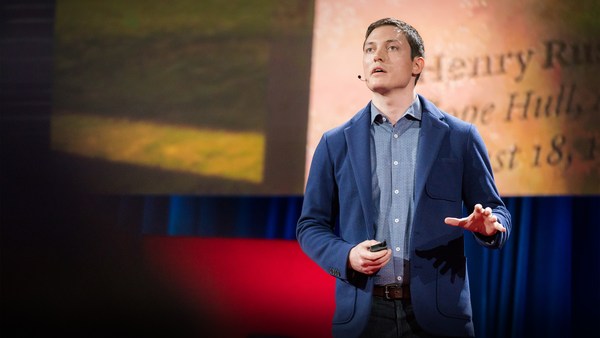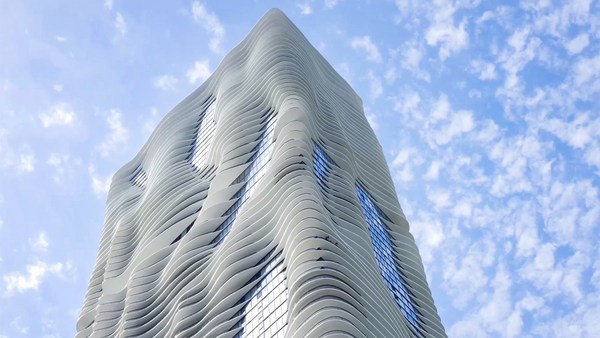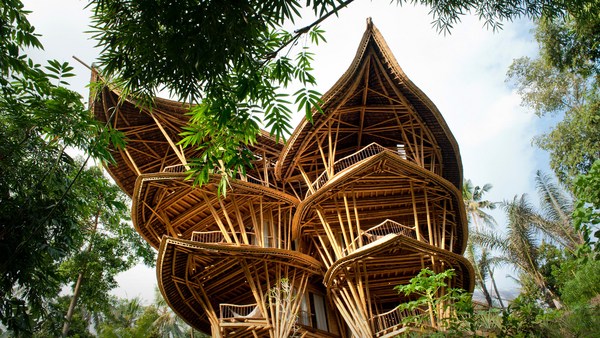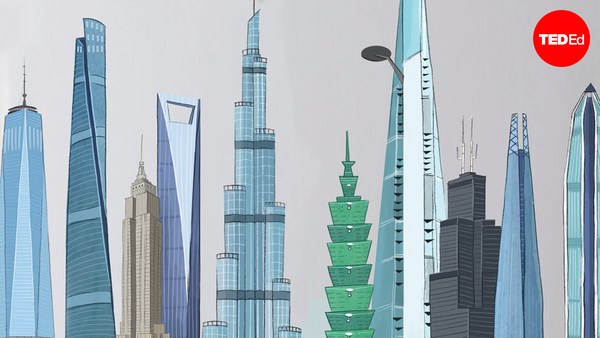It was the end of October in the mountains in Austria. I was there on a field trip with my architecture students from Zurich. And when we reached a high valley, I surprised them with the news that there was no hut or hotel booked for the night. It was not a mistake. It was totally on purpose. The challenge was to build our own shelter with whatever we could find. And we all survived. It was cold, it was really tough ... and it was a great learning experience to discover that there are a lot of resources given by nature for free, and all that we need is our sensitivity to see them ... and our creativity to use them.
I found myself in a similar situation. When I was an architecture student about 13 years ago, I went to Bangladesh to a remote village called Rudrapur with the aim to design and build a school as my thesis project. I had lived in that village before when I was 19 and a volunteer at Dipshikha, a Bangladeshi NGO for rural development. And what I had learned from them was that the most sustainable strategy for sustainable development is to cherish and to use your very own resources and potential, and not get dependent on external factors. And this is what I tried to do with my architecture as well.
In terms of suitable building materials for my school, I didn't have to look far. They were right under my feet: mud, earth, dirt, clay, however you call it ... and bamboo that was growing all around. Electricity in remote Bangladesh is rare, but we didn't need it. We had human energy and the people were happy to have the work. Tools were an issue, too, but we had these guys, water buffalos. We had also tried a bit cows, but interestingly, they were too intelligent. They were always stepping in the holes of the previous round. They wouldn't mix the mud, the straw --
(Laughter)
the sand, which are the ingredients in the walls. And except a small team of consultants like my partner for realization, Eike Roswag, and my basket-weaver cousin, Emmanuel, it was all built by craftsmen from the village. And this is the METI school after six months of construction.
(Applause)
Thank you.
(Applause)
Load-bearing earth walls that really ground the school, and large bamboo structures that bring the lightness in. That's the classroom on the ground floor. Attached to it are the caves. They're for reading, for snuggling, for solo work, for meditation, for playing ... and the classroom on the top.
The children all signed with their names in Bengali the doors, and they did not only sign, they also helped building the school. And I'm sure you all had your hands in mud or clay before. It's wonderful to touch. I love it. The children loved it. And can you imagine the feeling of a small boy or a girl or an illiterate day laborer standing in front of that school building and knowing that you built this out of the ordinary bamboo and just the dirt underneath your feet, using nothing but your hands? That gives such an enormous boost of trust and confidence in yourself and the community.
And in the material. Especially mud has a very poor image. When we think of mud, we think of dirt -- it's ugly, it's nondurable -- and this is the image I want to change. In fact, it's the 11th rainy season for this school now, really harsh, horizontal monsoon rains, and the walls are standing strong.
(Applause)
So how does it work? First rule, a good foundation that keeps the wall dry from the ground, and second rule, a good roof that protects from the top, and third rule, erosion control. Mud walls need speed breakers so that the rainwater cannot run down the wall fast, and these speed breakers could be lines of bamboo or stones or straw mixed into the mud, just like a hill needs trees or rocks in order to prevent erosion. It works just the same way. And people always ask me if I have to add cement to the mud, and the answer is no. There is no stabilizer, no coating on these walls, only in the foundation. So this is the close-up of the wall after 10 rainy seasons, and as much as I grew a bit older, the wall got some wrinkles as well. The edges my not be as sharp as before, but it still looks pretty good, and if it needs repairing, it is really easy to do. You just take the broken part, make it wet, and put it back on the wall, and it will look the same as before. Wish that would work on me, too.
(Laughter)
Yeah, and the great thing is, if an earth wall is not needed anymore, it can go back to the ground it came from, turn into a garden, or get fully recycled without any loss of quality. There's no other material that can do this, and this is why mud is so excellent in terms of environmental performance.
What about the economic sustainability? When we built the school, I practically lived on the construction site, and in the evening, I used to go with the workers to the market, and I could see how they spent their money. And they would buy the vegetables from their neighbors, they would get a new haircut or a new blouse from the tailor. And because the main part of the building budget was spent on craftsmanship, the school wasn't just a building, it became a real catalyst for local development, and that made me happy. If I had designed the school in cement and steel, this money would have been exported and lost for those families.
(Applause)
The building budget at that time was 35,000 euros -- it's probably doubled by now -- and this is a lot of money for that region, and especially because this money is working within the community and rotating fast, and not on the stock market. So when it comes to the economic sustainability of my project, my main question is, who gets the profit?
How many of you in here have some experience living in a mud house? Chris Anderson, where is your hand?
(Laughter)
You? OK.
Yeah. It seems totally out of our focus, but approximately three billion people all around the planet are living in earth houses, and it is a traditional building material in Europe just as much as in Africa.
Strangely enough, mud is not considered worthy of being studied at universities ... so I brought the dirt to Harvard,
(Laughter)
precisely 60 tons of dirt right in front of the main facade of the Graduate School of Design. Students and faculty rolled up their sleeves, got their hands dirty and transformed the front into a warm place for people to gather. Children would climb the structures, skaters would ride the ramp, students having lunch breaks, and it was particularly fascinating to see how many people were touching the wall, and we usually don't go around cities caressing our facades, right?
(Laughter)
(Laughter)
Of course, this was a small-scale project, but in terms of awareness-building and in terms of education, it was like an acupuncture trigger point. And in fact, in more and more countries, load-bearing earthen structures are not allowed to be built anymore although they're traditional and have lasted for hundreds of years, and not because the material is weak, but because there are no architects and engineers who know how to deal with that material. So education on all levels, for craftsmen, engineers and architects, is really strongly needed. Equally important is technological development, like prefabrication developed by my colleague Martin Rauch, who is an Austrian artist and expert in earthen structures. And he has created technologies for rammed earth elements, for prefabrication of rammed earth elements that include insulation, wall heatings and coolings and all sorts of electrical fittings that can be layered to multistoried buildings, and this is important in order to scale up and in order to [speed] up the processes, like in the Ricola Herb Center in Switzerland.
And finally, we need good built projects that prove you can build with an ancient material in a very modern way. It is not a matter of how old a material is; it's a matter of our creative ability to use it today. These, for example, are three hostels that I did in China in the village Baoxi, about six hours by bus from Shanghai. The outside shape is woven bamboo, and the inside core is stones and rammed earth. And it is a traditional building material. Even large parts of the Great Wall of China have been built with rammed earth, but it's getting replaced by concrete.
And this trend is happening very fast. Within only a couple of years, China has consumed more cement than the United States in the entire 20th century. And this trend of replacing natural building materials with materials that require a lot of energy, that are energy-intensive, and that emit CO2 is really clearly contributing to climate change. And we have alternatives, such as mud, stones, timber, bamboo, earth, that are totally effective options for all sorts of purposes.
This, for example, is an office building that we did for Omicron Electronics in Austria. Mud is healthy for the planet, but also for the human bodies, and the material is low-tech, but the performance is high-tech. The earth walls keep the highly sophisticated tools in the building safe by naturally regulating moisture.
And this wall in my own home is our humidfier. We love our six tons of dirt at home not only because it's healthy and sustainable. Its archaic warmth is touching deep within.
My personal dream is to build a mud skyscraper right in Manhattan.
(Laughter)
Yeah.
(Applause)
And this dream isn't so crazy if you think of the mud city of Shibam in Yemen that was built in the 16th century and has lasted now for 500 years. What was possible that long ago is possible today as well, and we can apply all our technical know-how to these ancient materials so that it meets our needs and our dreams.
All around us, and just below our feet ... are wonderful natural building materials. Let's use them. And I deeply believe our homes, our work spaces, our cities would become more healthy and sustainable and more humane and beautiful.
Thank you.
(Applause)





